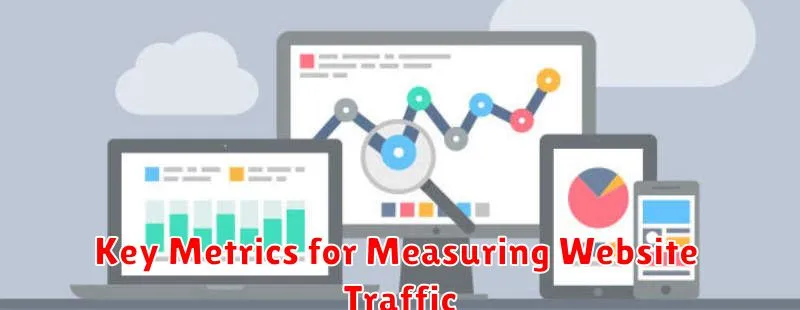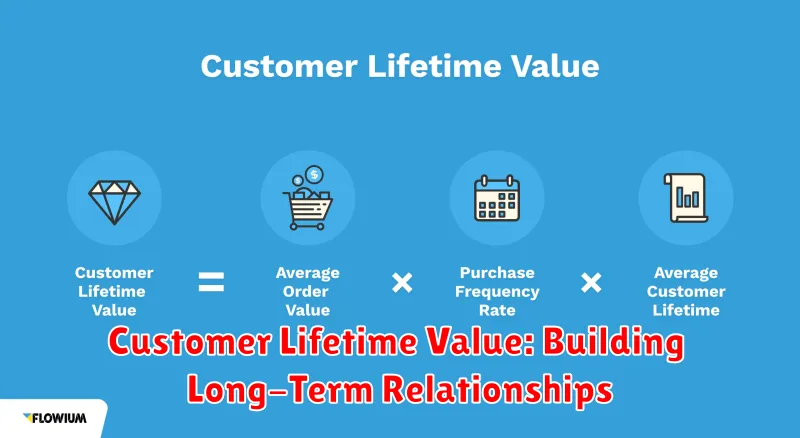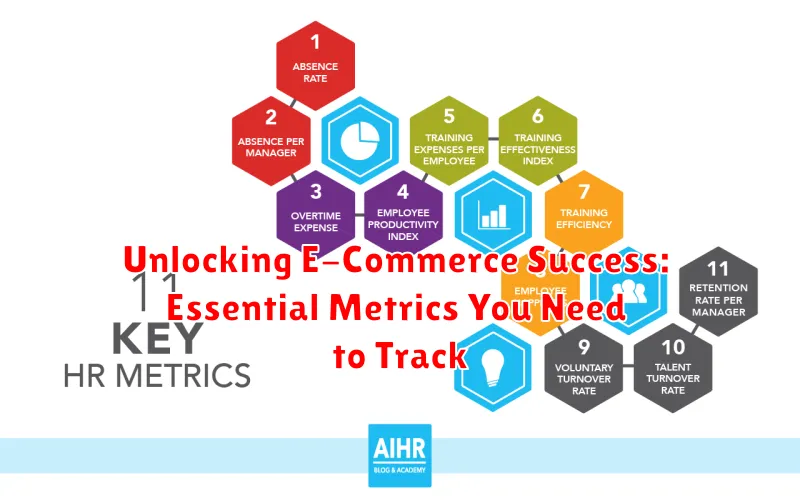In the dynamic world of e-commerce, achieving sustainable success requires more than just launching a website and listing products. It demands a data-driven approach, a keen understanding of key performance indicators (KPIs), and the ability to leverage these essential metrics to optimize your strategies. This article will delve into the crucial e-commerce metrics you need to track to unlock the true potential of your online business, covering everything from conversion rates and customer acquisition cost (CAC) to average order value (AOV) and customer lifetime value (CLTV). Mastering these metrics is paramount to making informed decisions, driving growth, and ultimately, achieving e-commerce success.
Whether you’re a seasoned e-commerce entrepreneur or just starting your online journey, understanding and effectively utilizing these metrics is non-negotiable. By gaining insights into these key performance indicators, you can identify areas of strength, pinpoint weaknesses, and implement data-backed strategies to improve your bottom line. This comprehensive guide will equip you with the knowledge to effectively track, analyze, and interpret these essential e-commerce metrics, empowering you to make strategic adjustments and propel your business towards sustainable e-commerce success.
Understanding the Importance of E-Commerce Metrics
In the competitive landscape of online business, simply launching an e-commerce store is not enough. Data-driven decision making is paramount to achieving sustainable growth and profitability. This is where e-commerce metrics come into play. They provide valuable insights into the performance of your online store, allowing you to identify areas of strength and weakness.
By tracking and analyzing these metrics, you can understand customer behavior, optimize marketing campaigns, and ultimately, boost your bottom line. Without a clear understanding of these key performance indicators (KPIs), you’re essentially navigating your business in the dark. Metrics illuminate the path to success, providing a clear picture of what’s working and what needs adjustment.
Effective metric tracking enables you to identify trends, understand customer preferences, and make informed decisions regarding pricing, product assortment, and marketing strategies. It allows you to pinpoint areas where resources are being used effectively and where they may be wasted. Ultimately, understanding your e-commerce metrics is crucial for maximizing your return on investment and achieving long-term success.
Key Metrics for Measuring Website Traffic

Driving traffic to your e-commerce store is paramount, but it’s equally crucial to understand the nature of that traffic. Analyzing key metrics provides valuable insights into visitor behavior and helps optimize your marketing strategies. Here are some essential metrics to track:
Website Traffic Sources
Identifying where your visitors are coming from is crucial. Are they finding you through organic search, social media, paid advertising, or referrals? Knowing your traffic sources allows you to allocate marketing resources effectively.
Unique Visitors vs. Total Visits
Unique visitors represent the number of individual people who visit your site within a specific timeframe, while total visits counts all visits, even from the same individual. This distinction helps gauge reach versus engagement.
Bounce Rate
A high bounce rate (percentage of visitors who leave after viewing only one page) can indicate issues with site design, content relevance, or user experience. Monitoring this metric is key to improving user engagement.
Pages per Visit
Tracking pages per visit gives insight into how users navigate your site. A higher number suggests users are exploring more content, indicating potential interest and engagement.
Average Session Duration
Average session duration, the time spent on your site per visit, indicates user interest and content quality. Longer sessions can suggest higher engagement with your products or services.
Conversion Rate: Tracking Your Sales Success
Conversion rate is a fundamental metric in e-commerce, representing the percentage of website visitors who complete a desired action, typically a purchase. Tracking this metric is crucial for understanding the effectiveness of your sales funnel and identifying areas for improvement.
Calculating your conversion rate is straightforward: divide the number of conversions by the total number of website visitors and multiply by 100%. For example, if you had 10,000 visitors and 200 sales, your conversion rate is 2%.
A low conversion rate may indicate issues with website usability, product pricing, or marketing messaging. Analyzing conversion rates across different segments, such as traffic source or product category, can pinpoint specific areas needing optimization. Regularly monitoring this metric allows you to track the impact of changes and continuously improve your sales performance.
Improving Your Conversion Rate
Several strategies can help boost your conversion rate. These include optimizing website design for user experience, offering clear and compelling product descriptions, simplifying the checkout process, and using persuasive calls to action. A/B testing different elements of your website can also provide valuable insights into what resonates best with your audience.
Average Order Value: Maximizing Revenue per Customer
Average Order Value (AOV) represents the average amount spent by a customer per order. Understanding and optimizing your AOV is crucial for driving revenue growth and profitability. By encouraging customers to spend a little more per transaction, you can significantly impact your bottom line.
Calculating AOV is straightforward: divide your total revenue by the total number of orders. This metric provides valuable insights into customer purchasing behavior and highlights opportunities for improvement.
Strategies to Increase AOV
Several effective strategies can help boost your AOV. Product bundling, offering complementary items at a discounted price, encourages larger purchases. Volume discounts, like “buy two, get one free,” also incentivize higher spending. Minimum order thresholds for free shipping can nudge customers to add more to their carts. Upselling and cross-selling techniques, suggesting premium versions or related products, can also contribute to a higher AOV.
Customer Lifetime Value: Building Long-Term Relationships

Customer Lifetime Value (CLTV or CLV) represents the total revenue you can reasonably expect from a single customer throughout their relationship with your business. Understanding CLTV is crucial for making informed decisions about sales, marketing, and customer support.
Calculating CLTV involves considering factors like average purchase value, purchase frequency, and customer lifespan. A higher CLTV indicates stronger customer relationships and more sustainable business growth. By focusing on increasing CLTV, you shift from transactional interactions to fostering loyalty and repeat business.
Strategies for improving CLTV include personalized marketing campaigns, loyalty programs, and exceptional customer service. Investing in these areas can lead to increased customer retention and higher overall profitability.
Cart Abandonment Rate: Identifying and Addressing Checkout Issues
Cart abandonment rate is a critical metric revealing the percentage of shoppers who add items to their online cart but leave without completing the purchase. A high abandonment rate signifies friction in the checkout process, resulting in lost revenue.
Identifying the causes requires analyzing user behavior. Common reasons include unexpected shipping costs, complicated checkout forms, limited payment options, and security concerns. Website analytics can pinpoint where users drop off, highlighting problem areas.
Addressing these issues is crucial for improving conversions. Strategies include offering transparent pricing, simplifying the checkout process, providing diverse payment gateways, and displaying security badges to build trust. A/B testing different checkout designs can further optimize the user experience and reduce abandonment rates.
Return on Investment (ROI): Evaluating Your E-Commerce Strategies
Return on Investment (ROI) is a crucial metric for evaluating the effectiveness of your e-commerce strategies. It measures the profitability of your investments relative to their cost. A strong ROI indicates that your efforts are generating a positive return, while a low or negative ROI suggests a need for adjustments.
Calculating ROI involves dividing your net profit by the cost of your investment, then multiplying by 100 to express it as a percentage. Tracking ROI across different campaigns and strategies, such as paid advertising, email marketing, or social media promotions, allows you to identify which initiatives are driving the most profitable results.
Analyzing ROI helps you make informed decisions about resource allocation. By understanding which strategies offer the highest return, you can optimize your spending and maximize your profitability. Regularly monitoring your ROI can provide valuable insights into the overall health and success of your e-commerce business.

